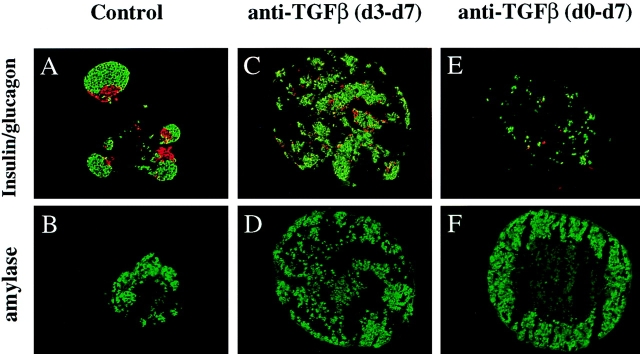Figure 10.
Analysis of pancreatic rudiments grown in the presence of a panTGF-β neutralizing antibody. To define whether TGF-β is necessary for islet formation, pancreatic rudiments were cultured in the presence of a pan-specific TGF-β neutralizing antibody. The antibody was added either from the first (d0) or the third (d3) day of the culture. The rudiments were analyzed by immunohistochemistry for insulin, glucagon, and amylase expression. In the control rudiments, the insulin- (green) and glucagon- (red) expressing cells are arranged into islet-like structure (A), budding from the core of the rudiment that is mainly composed of amylase-expressing cells (B). When the rudiments are cultured in the presence of the panTGF-β neutralizing antibody from the third day of culture (d3–d7), the endocrine cells differentiate, but do not bud (C), and form small clusters interspersed between the acinar cells (D). When the rudiments are cultured in the presence of the panTGF-β neutralizing antibody from the first day of culture (d0–d7), a more drastic effect is observed. The endocrine cells appear dispersed (E) and surrounded by acinar cells (F).

